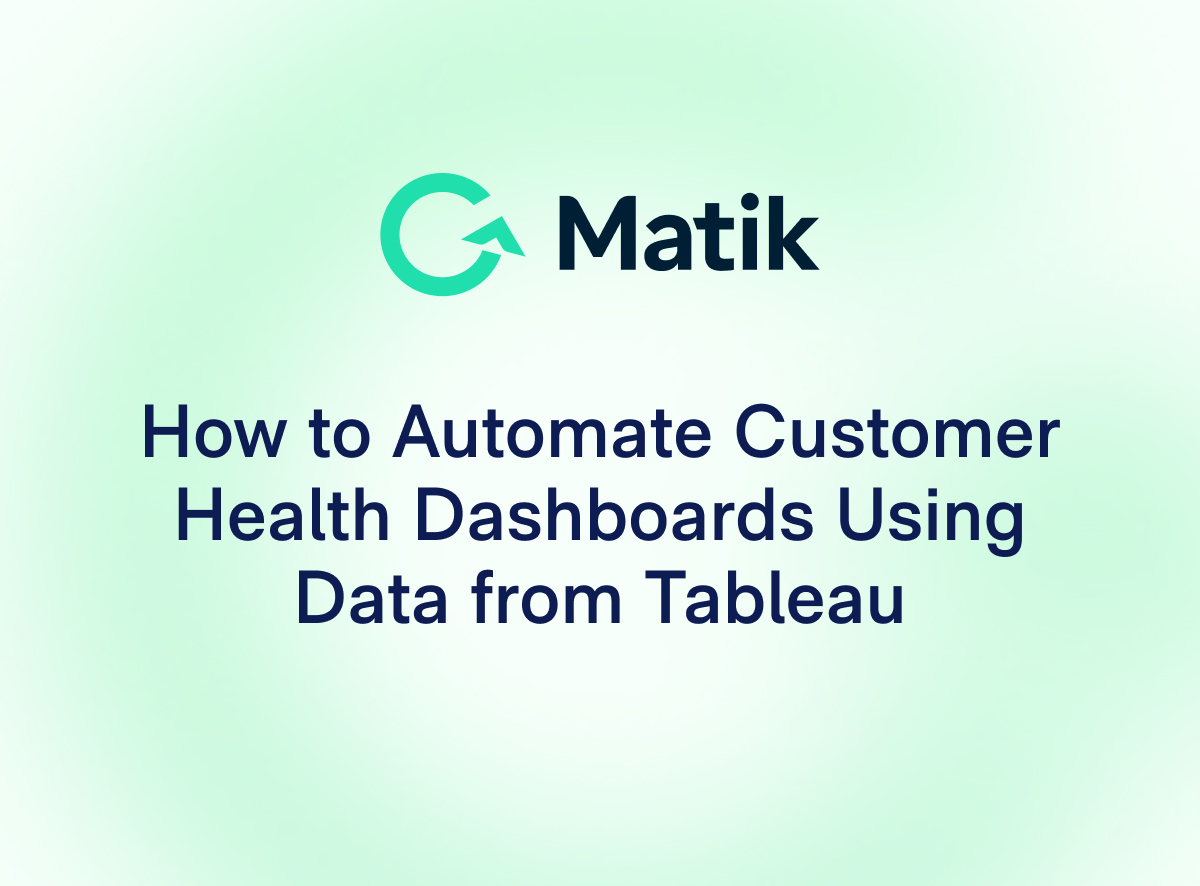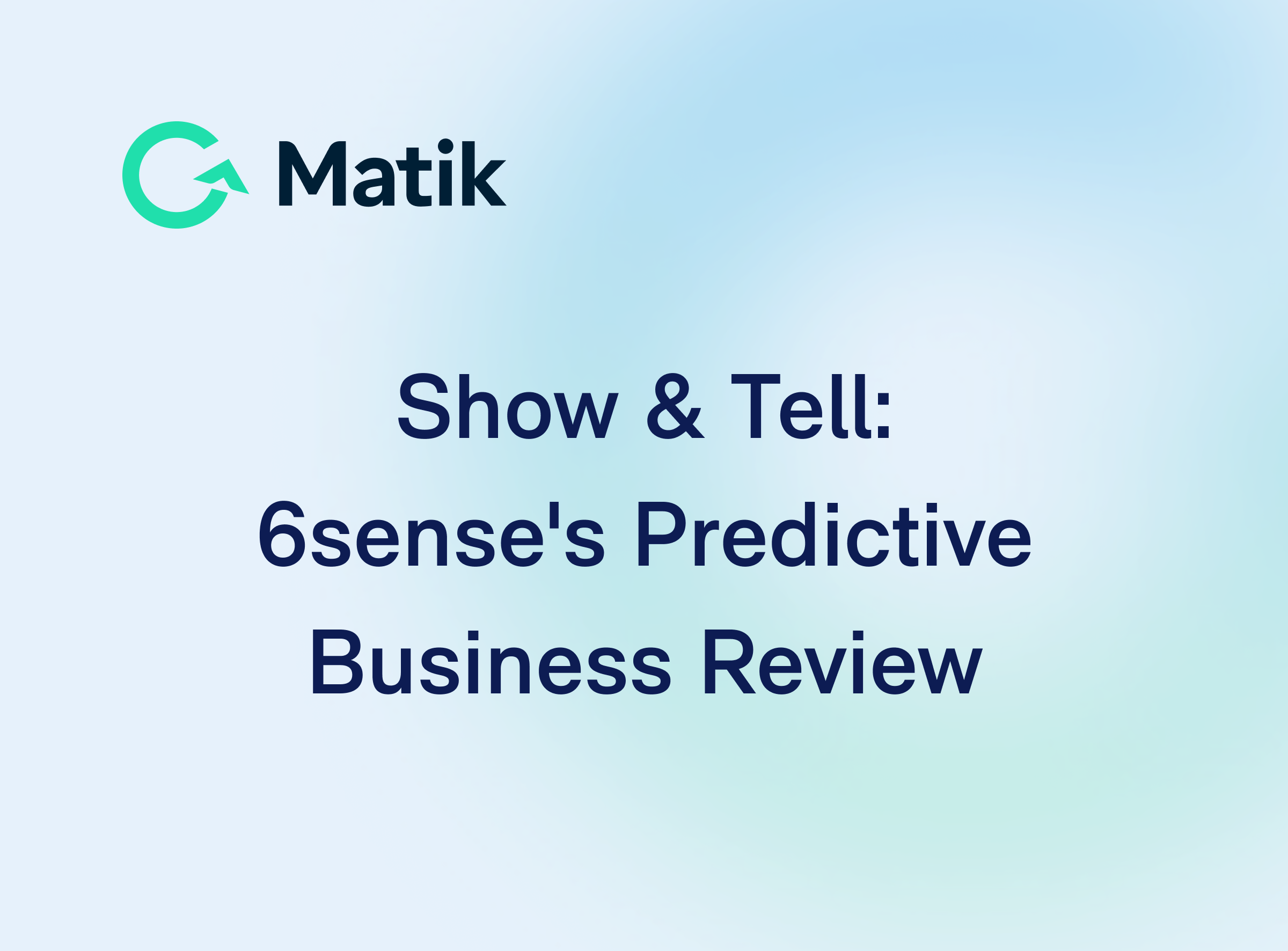Join Our Newsletter
As a customer success manager, you will engage with your customers through a variety of touchpoints, both formal and informal. While the cadence of those touchpoints may vary depending on the customer, all of your accounts will require a Quarterly Business Review (QBR).
QBRs may feel daunting — while they are great opportunities for showing the value of your product, they also play an important role in your customer’s decision to renew your services. For this reason, it’s critical to deliver engaging QBRs that tell an undeniable story about the role your product plays in the success of your customer’s business.
Key tips for creating engaging QBRs
The key to a winning QBR is using data to tell this story and guide your customer to a renewal. Here are three key things to keep in mind when creating a data-driven QBR:
- Reiterate partnership objectives and metrics: You likely defined goals and objectives at a kickoff call with the customer. Use a data-driven story to show how your product has been used to achieve these objectives over the last quarter.
- Highlight current success and future recommendations: This will be the bulk of your meeting, but remember not to get into the weeds. Drive the conversation forward with key insights. Too much data and the conversation lacks focus; too little data and you won't convince them of the success to date.
- Agree on next steps and set up a renewal conversation: Setting clear dates and milestones will align stakeholders on plans moving forward. It also builds trust with the customer because it shows that you understand what they need to do to continue to see value from your product or service.
How to structure an engaging QBR presentation
When it comes to the nuts and bolts of building an engaging QBR presentation, there are some essential elements you should include every time. Whether you're building a full multi-slide QBR presentation or a QBR one-pager as a quick reference, here is a guide for what to include to make sure it resonates.
- Reintroductions / account team overview: While you’ve likely had several touchpoints with your customer throughout the quarter, there may be some new faces in the room for a QBR. Open your presentation by re-introducing yourself and the other members of the account team.
- Value proposition: Once introductions are out of the way, remind everyone of your product’s core value proposition and how it relates to the work your customer does.
- KPI snapshot / objective review: You likely set KPIs and objectives when your customer onboarded. Now is the time to revisit those goals and remind the customer why they purchased your product.
- KPIs over time visual: A data visualization can illustrate how your product or service is helping your customer achieve their KPIs, guide their next action, and keep them on track towards a renewal.
- Table breakdowns on leaderboards: This is your opportunity to tell a story using the data your customer cares about, such as who is using your product the most and how often they are using it.
- Feature adoption: Next, give your customers a snapshot of how the product is being used—the features they use the most and the ones that are underutilized.
- ROI and value metrics: As you begin to wrap up your presentation, it’s time to quantify the value your customer is getting from the product. Remember, the particular metrics that tell the ROI story will depend on your customer’s unique KPIs and objectives outlined at the top of the presentation.
- Next steps: Finally, it’s time to work with your customers to determine next steps. Perhaps some action items emerged during your presentation or it’s time to schedule a renewal call. When you co-create the future of your customer relationship, you build trust and reaffirm the value of your service.
Remember: When you use data-driven storytelling to structure your QBR, creating the QBR itself is easier and the content is more engaging. Next time you build a QBR, make your life easier by using Matik's Essential QBR Template — this free template includes a slide-by-slide guide for how to build a QBR presentation, as well as examples of what it looks like in practice.
---
See Matik in Action—Request a Demo















